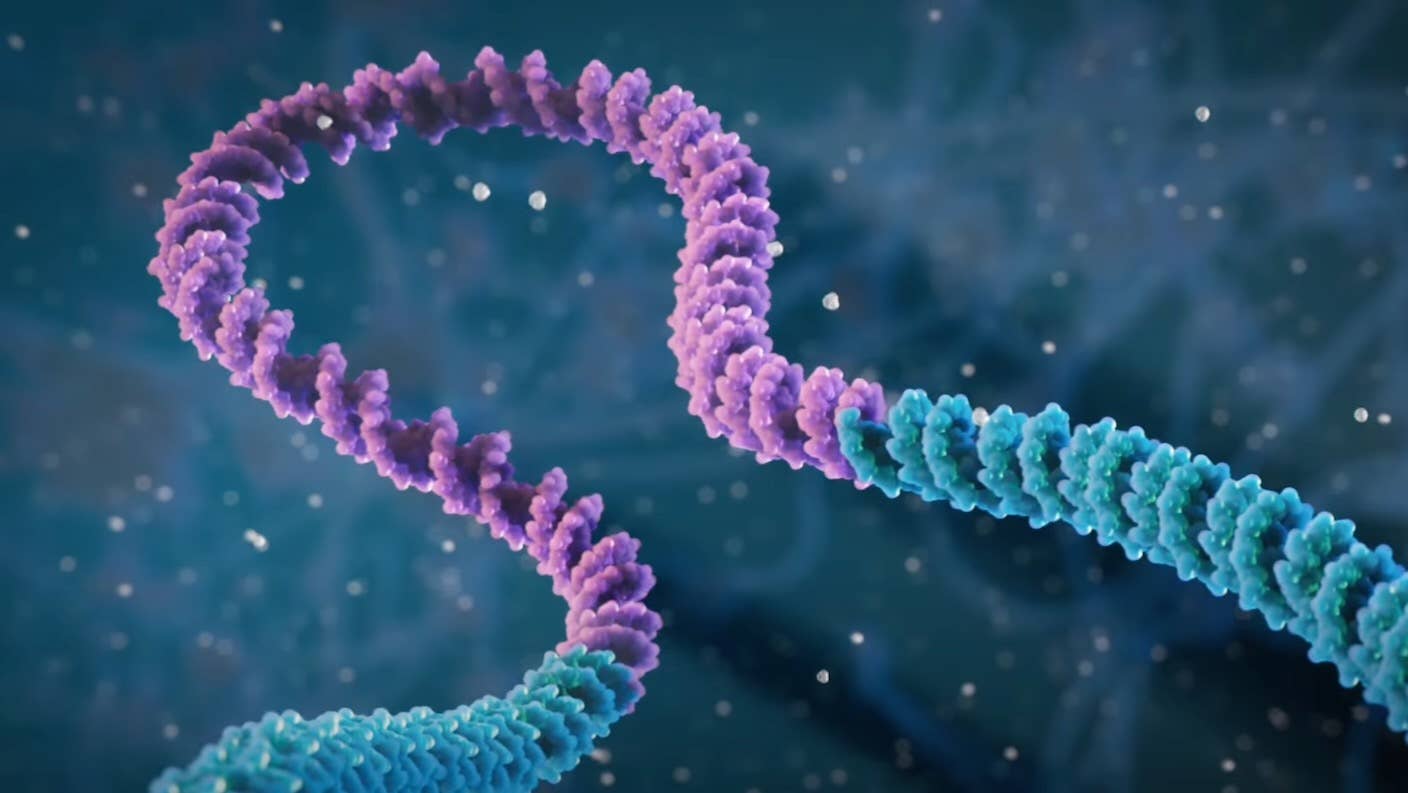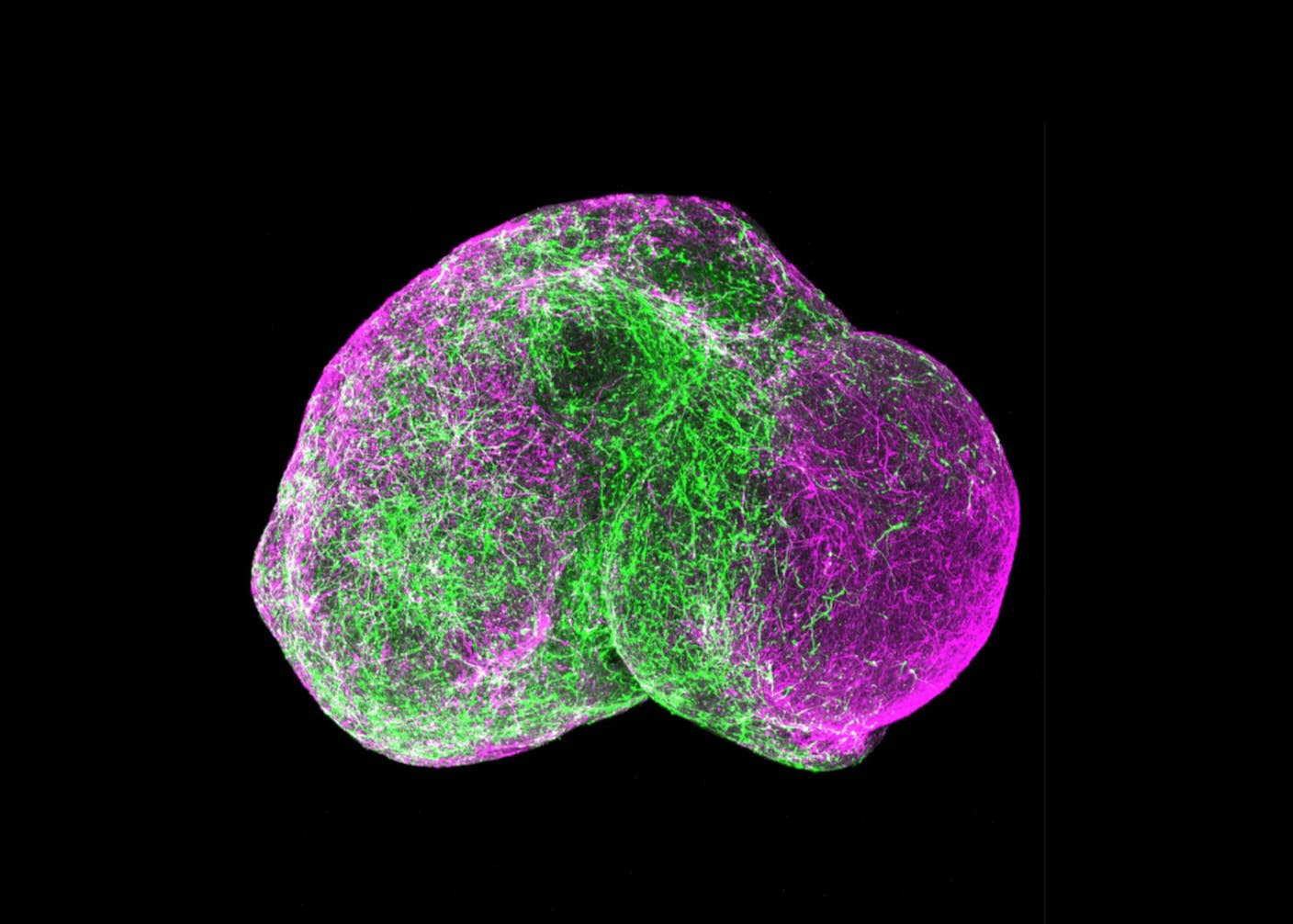Beyond CRISPR: Scientists Say New Gene Editing Tool Is Like a ‘Word Processor’ for DNA

Share
CRISPR was one of the most influential breakthroughs of the last decade, but it's still imperfect. While the gene editing tool is already helping people with genetic ailments, scientists are also looking to improve on it.
Efforts have extended the CRISPR family to include less damaging, more accurate, and smaller versions of the gene editor. But in the bacterial world, where CRISPR was originally discovered, we're only scratching the surface. Two new papers suggest an even more powerful gene editor may be around the corner—if it's proven to work in cells like our own.
In one of the papers, scientists at the Arc Institute say they discovered a new CRISPR-like gene editing tool in bacterial "jumping genes." Another paper, written independently, covers the same tool and extends the work to a similar one in a different family.
Jumping genes move around within genomes and even between individuals. It's long been known they do this by cutting and pasting their own DNA, but none of the machinery has been shown to be programmable like CRISPR. In the recent studies, scientists describe jumping gene systems that, in a process the teams are alternatively calling bridge editing and seekRNA, can be modified to cut, paste, and flip any DNA sequence.
Crucially, unlike CRISPR, the system does all this without breaking strands of DNA or relying on the cell to repair them, a process that can be damaging and unpredictable. The various molecules involved are also fewer and smaller than those in CRISPR, potentially making the tool safer and easier to deliver into cells, and can deal with much longer sequences.
"Bridge recombination can universally modify genetic material through sequence-specific insertion, excision, inversion, and more, enabling a word processor for the living genome beyond CRISPR," said Berkeley's Patrick Hsu, a senior author of one of the studies and Arc Institute core investigator, in a press release.
CRISPR Coup
Scientists first discovered CRISPR in bacteria defending themselves against viruses. In nature, a Cas9 protein pairs with an RNA guide molecule to seek out viral DNA and, when located, chop it up. Researchers learned to reengineer this system to seek out any DNA sequence, including sequences found in human genomes, and break the DNA strands at those locations. The natural machinery of the cell then repairs these breaks, sometimes using a provided strand of DNA.
CRISPR gene editing is powerful. It's being investigated in clinical trials as a treatment for a variety of genetic diseases and, late last year, received its first clinical approval as a therapy for sickle cell disease and beta thalassemia. But it's not perfect.
Because the system breaks DNA and relies on the cell to repair these breaks, it can be imprecise and unpredictable. The tool also works primarily on short sections of DNA. While many genetic illnesses are due to point mutations, where a single DNA "letter" has been changed, the ability to work with longer sequences would broaden the technology's potential uses in both synthetic biology and gene therapy.
Scientists have developed new CRISPR-based systems over the years to address these shortcomings. Some systems only break a single DNA strand or swap out single genetic "letters" to increase precision. Studies are also looking for more CRISPR-like systems by screening the whole bacterial universe; others have found naturally occurring systems in eukaryotic cells like our own.
The new work extends the quest by adding jumping genes into the mix.
An RNA Bridge
Jumping genes are a fascinating feat of genetic magic. These sequences of DNA can move between locations in the genome using machinery to cut and paste themselves. In bacteria, they even move between individuals. This sharing of genes could be one way bacteria acquire antibiotic resistance—one cell that's evolved to evade a drug can share its genetic defenses with a whole population.
In the Arc Institute study, researchers looked into a specific jumping gene in bacteria called IS110. They found that when the gene is on the move, it calls a sequence of RNA—like the RNA guide in CRISPR—to facilitate the process. The RNA includes two loops: One binds the gene itself and the other seeks out and binds to the gene's destination in the genome. It acts like a bridge between the DNA sequence and the specific location where it's to be inserted. In contrast to CRISPR, once found, the sequence can be added without breaking DNA.
“Bridge editing [cuts and pastes DNA] in a single-step mechanism that recombines and re-ligates the DNA, leaving it fully intact,” Hsu told Fierce Biotech in an email. “This is very distinct from CRISPR editing, which creates exposed DNA breaks that require DNA repair and have been shown to create undesired DNA damage responses.”
Be Part of the Future
Sign up to receive top stories about groundbreaking technologies and visionary thinkers from SingularityHub.


Crucially, the researchers discovered both loops of RNA can be reprogrammed. That means scientists can specify a genomic location as well as what sequence should go there. In theory, the system could be used to swap in long genes or even multiple genes. As a proof of concept in E. coli bacteria, the team programmed IS110 to insert a DNA sequence almost 5,000 bases long. They also cut and inverted another sequence of DNA.
The study was joined by a different paper written independently by another team of scientists at the University of Sydney detailing both IS110 and a related enzyme in a different family, IS111, that they say is similarly programmable. In their paper, they called these systems "seekRNA."
The tools rely on a single protein half the size of those in CRISPR. That means it may be easier to package them in harmless viruses or lipid nanoparticles—these are also used in Covid vaccines—and ferry them into cells where they can get to work.
The Next Jump
The approach has big potential, but there's also a big caveat. So far, the researchers have only shown it works in bacteria. CRISPR, on the other hand, is incredibly versatile, having proved itself in myriad cell types. Next, they hope to hone the approach further and adapt it to mammalian cells like ours. That may not be easy. The University of Tokyo's Hiroshi Nishimasu says the IS110 family hasn't yet shown itself amenable to such a task.
All this is to say it's still early in the technology's arc. Scientists knew about CRISPR years before they showed it was programmable, and it wasn't put to work in human cells until 2013. Although it's moved relatively quickly from lab to clinic since then, the first CRISPR-based treatments took years more to materialize.
At the least, the new work shows we haven't exhausted all nature has to offer gene editing. The tech could also be useful in the realm of synthetic biology, where single cells are being engineered on grand scales to learn how life works at its most basic and how we might reengineer it. And if the new system can be adapted for human cells, it would be a useful new option in the development of safer, more powerful gene therapies.
"If this works in other cells, it will be game-changing," Sandro Fernandes Ataide, a structural biologist at the University of Sydney and author on the paper detailing IS111 told Nature. "It’s opening a new field in gene editing."
Image Credit: The Arc Institute
Jason is editorial director at SingularityHub. He researched and wrote about finance and economics before moving on to science and technology. He's curious about pretty much everything, but especially loves learning about and sharing big ideas and advances in artificial intelligence, computing, robotics, biotech, neuroscience, and space.
Related Articles

AI Can Now Design Proteins and DNA. Scientists Warn We Need Biosecurity Rules Before It’s Too Late.

Kids With Spinal Muscular Atrophy Show Dramatic Improvement With FDA-Approved Gene Therapy

Five-Year-Old Mini Brains Can Now Mimic a Kindergartener’s Neural Wiring. It’s Time to Talk Ethics.
What we’re reading
